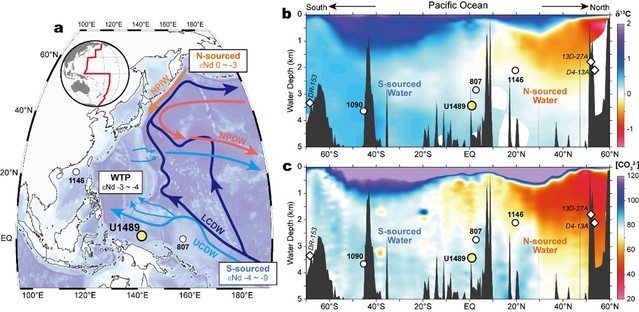Zhimin Jian a, Haowen Dang a, Jimin Yu b c, Qiong Wu d, Xun Gong e f, Christian Stepanek f, Christophe Colin g, Lili Hu a, Gerrit Lohmann f, Xiaoli Zhou a, Sui Wan h
a State Key Laboratory of Marine Geology, Tongji University, Shanghai, China
b Laoshan Laboratory, Qingdao, 266237, China
c Research School of Earth Sciences, Australian National University, Canberra, ACT 2601, Australia
d College of Oceanography, Hohai University, Nanjing, China
e Hubei Key Laboratory of Marine Geological Resources, China University of Geosciences, 430074, Wuhan, China
f Alfred-Wegener-Institut, Helmholtz-Zentrum für Polar- und Meeresforschung, 27570 Bremerhaven, Germany
g Université Paris-Saclay, CNRS, GEOPS, 91405 Orsay, France
h South China Sea Institute of Oceanology, Chinese Academy of Sciences, Guangzhou, China
Abstract:
The global climate has been gradually cooling over the Cenozoic and is punctuated by the intensification of Northern Hemisphere Glaciation (NHG) from the latest Pliocene to earliest Pleistocene (∼3.1–2.5 millions of years ago, Ma). A decline of atmospheric CO2 is supposed as a prerequisite for the NHG, but the associated carbon-cycle processes remain elusive. Here we combine foraminiferal records of neodymium isotope and boron-calcium ratio, and simulations of an Earth system model, to investigate changes in the water-mass composition and carbonate-ion concentration of the deep Pacific Ocean during the NHG. Our proxy records have revealed a significant expansion of southern-sourced waters with increased respired carbon storage into the deep Pacific during the NHG. These changes may be explained by strengthened deep-water formation and biological-pump efficiency in the Southern Ocean due to Antarctic sea-ice growth, as suggested by our model experiments and evidence from the Sub-Antarctic region. These results provide key clues for quantifying the role of the dissolved inorganic carbon content of deep Pacific waters in modulating atmospheric CO2 during the NHG.


